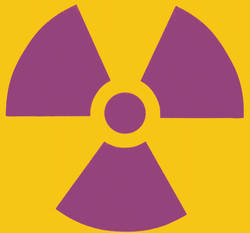
Because of their large portion and presence in the Earth's biomass, microbes essentially have a tremendous impact on the Earth.
WHAT DO MICROBES DO FOR THE ENVIRONMENT?
PETROLEUM EATING BACTERIA
There are a lot of things microbes do that benefit our surroundings.
The spilled oil, for example from a dangerous shipwreck, is a very harmful environmental pollutant. However, there are bacteria that can actually mass reproduce when there is oil for them to consume. (I-90)
ENERGY-GENERATING BACTERIA
Bacteria with nanowires can digest toxic waste while at the same time produce electricity. This could potentially be used to clean up sewage treatment plants while simultaneously powering them. (I-91)
PREVENTING RADIATION WITH BACTERIA
There are bacteria that are found to have the ability to contain radiation within them to neutralize it. This can be beneficial to uranium mines and nuclear plants that overflow with cancerous radiation. (I-92)
BIOFUEL MADE BY PANDA POOP
Research has found a bacteria in panda's feces that can break down lignocellulose, which could speed up the development of plant-based biofuels. (I-93)
CAR FUEL FROM NEWSPAPER
Bacteria found in animal feces can make the biofuel butanol, just by eating paper. Fuel could potentially become much less expensive by using this method. (I-94)
BACTERIA CLEANS UP OUR PLASTIC
Although still unsure whether this is beneficial to our environment, there have been bacteria found to consume plastic wastes that are present all around us - especially in the ocean. (I-95)
CYANOBACTERIA REMOVES CARBON DIOXIDE
These bacteria synthesize all of their biological molecules with carbon dioxide, a harmful gas that contributes to global warming. By fusing with the carbon dioxide in the air, they slowly decreases the amount of it in our atmostphere. (I-96)
CAN BE THEY BE HARMFUL TO OUR ENVIRONMENT?
Yes. Although there are many beneficial things microbes do for the environment, there are a few that also harm it. For example, there are bacteria that infects plants and steals their nutrients, killing the plant cells. Further research can bring hope to reducing these harmful bacteria and increasing the use of beneficial ones. (T-73)
In recent studies, methane-making bacteria Methanosarcina has been suggested to be the cause of the largest mass extinction of life about 252 million years ago. Evidence show that these archaea had suddenly produce mass amounts of methane, which dramatically changed the climates and the chemistry of the oceans. This sudden change may be the cause of the mass extinction of 90% of the population on Earth. (T-88)

Methanosarcina (I-80)

(I-13)

(I-13)
Microbes and the Environment








Check out other pages here!
 Background |  Our Perception Changes... |  The Microbiome |
|---|---|---|
 Microbes and Nutrition |  Fecal Transplants |  Evolution of Microbes |
 Identifying Microbes with DNA |

